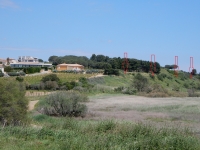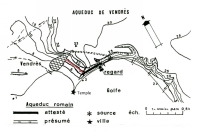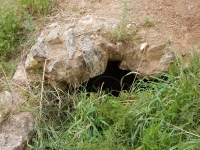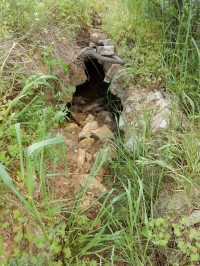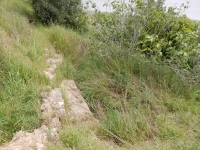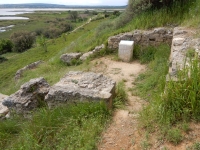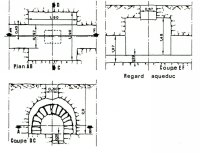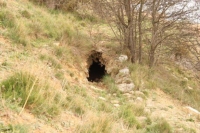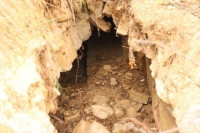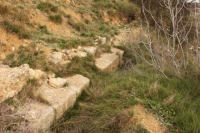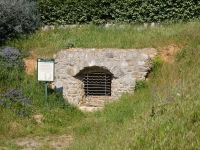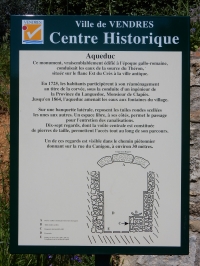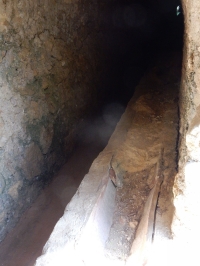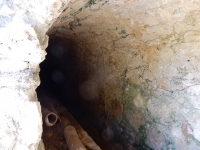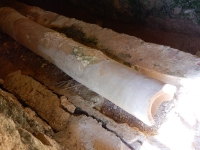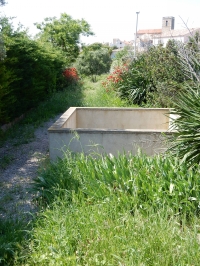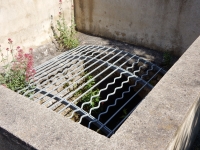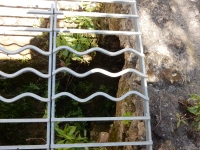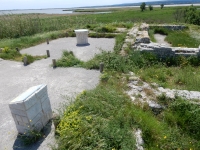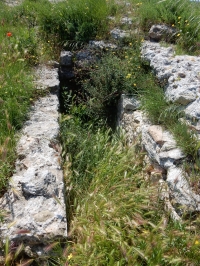Villa 'Temple de Venus'This site was occupied from the end of the second century BCE to the beginning of the 1st century BCE, given the presence of republican italic ceramics. After the foundation of the Roman colony of Beziers in 36 BCE the site was embellished with an important villa, to the fifth century CE at least, to which a baths complex was added. How this was supplied with water in unknown. Several clues underline the baths functions:- orange traces on the ground, marking the location of piled bricks of the hypocaust that supported the heating floors: suspensurae (1, 2, 11) - the apse shape of room 1 designated, by its 37 m2, as the warm room: the caldarium - the location of two ovens in room 7, the praefurnia. From the warm room 1, we pass into the smaller tepidarium (26 m2), a warm room (2), heated by the praefurnia and by the circulation of hot air in the adjoining wall with the room 1. Room 11, much narrower (4 m2), perhaps equipped with a basin and a bench, probably corresponds to an oven, laconicum, which benefited from an additional heat source by the ducting ensuring the circulation of hot air from room 11 to room 2. Room 3 (between 15 and 17 m2) had to correspond to the cold room, the frigidarium. As for the rooms 4 and especially room 13, the walls and the floor were watertight, ensured by the concrete tiles and the hydraulic coating, which made it possible to preserve important volumes of water; they could correspond to baths or swimming pools. Space 14 - built on a powerful foundation invert, which arched wall, perhaps incomplete, is relatively well preserved - remains of delicate interpretation. The massive construction presents an internal facing, rather neat, of small blocks of shell limestone. After the 3rd century, the villa underwent major alterations, particularly in the organization of the baths rooms. Heated floors and the northern walls were knocked down, while new rooms were erected on the demolished ones. The techniques used were much coarser and the whole less neat. On the site, life slowed down, and continued, according to the ceramic furniture and the promontory remains, to the end of antiquity. Text from a leaflet by M.Clavel-Lévèque and M. Sorini for the PCB: Parc Culturel du Biterrois, PO box 6, 34440 Nissan-lez-Ensérune E-mail / Website / Tel: (0033) (0)6 15 59 46 18 |
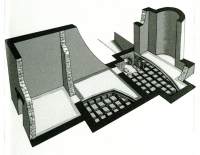
|
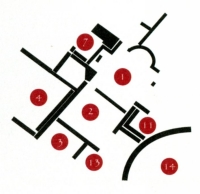
|
